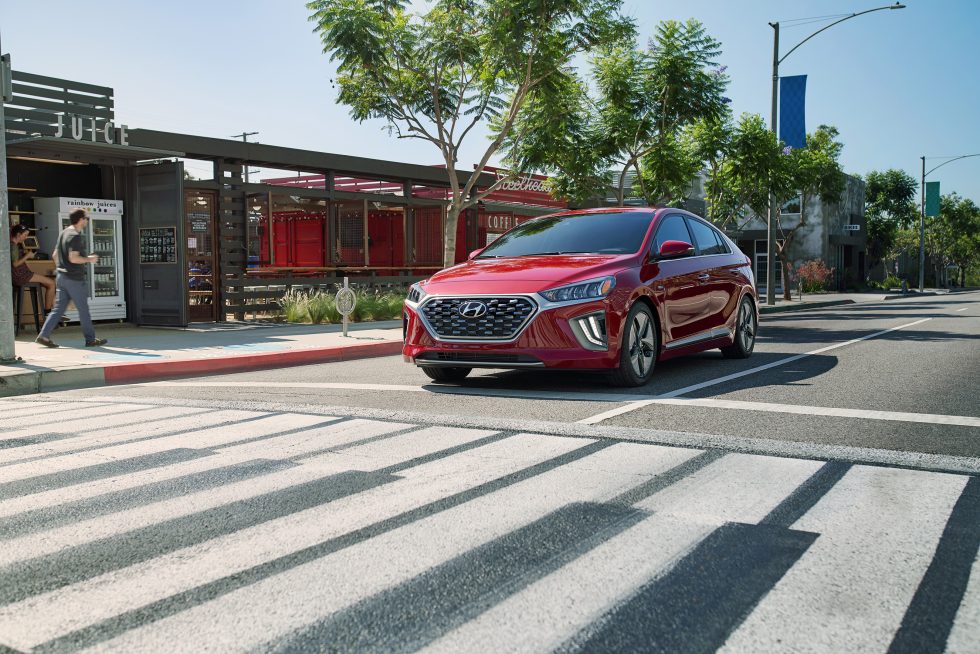-

Normally, I try to photograph each of our test cars, but this time the car got stolen before I had a chance, so please enjoy these photos from Hyundai. [credit: Hyundai ]
It was an email I hoped I'd never have to write. "Hi [Hyundai PR person], I hope you've had a pleasant July 4th. I hate to have to write this email but someone has just stolen the Ioniq that you've lent us." Up until that point, my week with the little subcompact hybrid had been wonderful—after all, what's not to like about 55mpg (4.3L/100km)? But there turns out to be a surprising hero in this story, one reviled by much of the Ars Technica audience: a connected car service saved the day.
The Ioniq isn't the newest electrified vehicle in Hyundai's lineup—in fact, it debuted in 2016 and, in the years since, has been joined by plug-in hybrid EV and battery EV versions. But for some reason or other, this model year 2020 Ioniq was the first time we've tested one. The range starts at $23,200 for the most efficient, if most spartanly equipped trim, the Ioniq Blue. But as is the way of the press fleet, ours was a $31,200 Ioniq Limited, loaded with features like adaptive cruise control, LED headlights, a 10.25-inch infotainment system with navigation (and CarPlay and Android Auto), to name but a few.
The biggest change for this model year was a midlife refresh, with new, more aerodynamic styling and a revised interior. The Ioniq is powered by a 1.6L direct-injection Atkinson-cycle four-cylinder engine that generates 104hp (76kW) and 109lb-ft (148Nm), which works in concert with 43hp (32kW), 125lb-ft (169Nm) permanent-magnet synchronous electric motor which together will send up to 139hp (104kW) to the front wheels via a six-speed dual-clutch transmission. The battery is a 1.56kWh lithium-ion pack, and that helps the Ioniq achieve that combined average of 55mpg, or 58mpg (4.1l/100km) if it's the Blue trim, thanks to that car's 15-inch wheels (as opposed to the 17-inch alloys of the Limited).
No comments:
Post a Comment